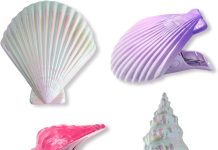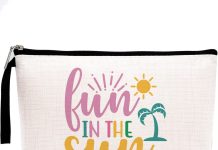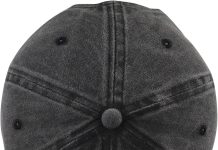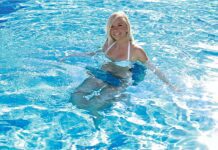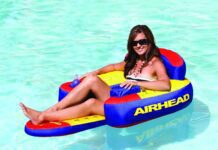Looking to add some excitement to your water adventures while also getting a great workout? Look no further than paddleboards! These versatile watercraft provide a unique and thrilling way to explore the open waters while engaging in a full-body workout. Whether you’re a novice or an experienced paddleboarder, this article will shed light on the benefits of paddleboarding for both cruising and exercise, making it an exhilarating activity suitable for everyone. So, grab your paddleboard and get ready to discover the perfect blend of relaxation and physical activity on the serene waters.
Different Types of Paddleboards
All-around Paddleboards
All-around paddleboards are versatile and suitable for various activities on the water. They are designed to offer stability, maneuverability, and ease of use. Whether you are a beginner or an experienced paddler, an all-around paddleboard is a great choice for recreational paddling, fishing, or even yoga on the water. These boards typically have a wider and more stable design, making them perfect for beginners who are still learning to balance on a paddleboard.
Touring Paddleboards
Touring paddleboards are designed for long-distance paddling and exploring. They are longer and narrower than all-around paddleboards, allowing for faster and more efficient cruising through the water. Touring paddleboards often have a pointed nose and a displacement hull, which helps them cut through the water smoothly and maintain stability even in choppy conditions. If you enjoy exploring lakes, rivers, or coastal areas for several hours at a time, a touring paddleboard is the ideal choice for you.
Fitness Paddleboards
Fitness paddleboards are specifically designed for exercise and fitness activities on the water. They typically have a wider deck with ample space for practicing yoga or doing various fitness routines. Fitness paddleboards are also equipped with attachment points for exercise bands or straps, allowing you to perform resistance training while paddling. These boards are a fantastic way to combine your love for paddleboarding with a full-body workout.
Inflatable Paddleboards
Inflatable paddleboards, or iSUPs, have gained immense popularity in recent years due to their portability and ease of storage. These boards are made from durable materials that allow them to be inflated and deflated quickly. Inflatable paddleboards are lightweight, making them easy to carry and transport. They are a great option for those who don’t have much space for storage or who often travel and want to bring their paddleboard along. Despite their inflatable nature, these boards offer excellent stability and performance on the water.
Rigid Paddleboards
Rigid paddleboards, also known as hard paddleboards, are made from solid materials such as fiberglass, carbon fiber, or wood. These boards offer superior performance and responsiveness compared to inflatable paddleboards. Rigid paddleboards are generally lighter, stiffer, and more maneuverable, making them a favorite among experienced paddlers or those who want the best possible paddling experience. However, they require more space for storage and transportation.
Choosing the Right Paddleboard
Consider Your Skill Level
When choosing a paddleboard, it’s essential to assess your skill level honestly. Beginners should opt for wider and more stable boards that provide better balance and maneuverability. As you gain experience and confidence on the water, you can consider transitioning to narrower and more performance-oriented boards.
Determine Your Paddling Purpose
Think about the specific activities you plan to do on your paddleboard. Are you looking for a board for recreational paddling, exploring, fishing, or fitness purposes? Identifying your paddling purpose will help you choose a board that best suits your needs and preferences.
Evaluate the Board Size
Board size plays a crucial role in your overall paddling experience. Longer and narrower boards are faster and more efficient for touring or racing, while shorter and wider boards provide more stability and maneuverability. Consider the weight and height of the individuals who will be using the board to ensure a proper fit.
Weight Capacity and Stability
Always check the weight capacity of a paddleboard to ensure it can support your weight and any additional gear or equipment you plan to bring along. Stability is also important, especially for beginners or those who want a more relaxed and stable paddling experience.
Construction Materials
Different paddleboards are constructed using various materials, and each material has its own benefits and drawbacks. Fiberglass, carbon fiber, and wood are commonly used for rigid paddleboards, while inflatable boards are typically made from durable PVC. Consider factors such as durability, performance, weight, and maintenance requirements when deciding on the construction material.
Benefits of Paddleboarding
Full-Body Workout
Paddleboarding is a fantastic way to work out your entire body. Every stroke engages your arms, shoulders, and back muscles, while maintaining balance on the board activates your core. The constant paddling motion also provides a great cardiovascular workout, helping to improve stamina and endurance.
Low Impact Exercise
Unlike running or high-impact aerobic exercises, paddleboarding is gentle on the joints. The buoyancy of the water reduces the impact on your ankles, knees, and hips, making it an excellent option for people with joint issues or those who prefer low-impact exercises.
Improves Balance and Core Strength
Balancing on a paddleboard requires constant adjustments and engages your core muscles to maintain stability. Regular paddleboarding can lead to improved balance and a stronger core, which are crucial for overall strength and stability in your daily activities.
Cardiovascular Health
Paddleboarding is a great way to get your heart rate up and improve cardiovascular health. The continuous paddling motion increases your heart rate and helps build endurance. Regular paddleboarding can contribute to a healthier heart and a reduced risk of cardiovascular diseases.
Mental Health Benefits
Spending time on the water and engaging in physical activity can have significant mental health benefits. Paddleboarding offers an opportunity to connect with nature, relieve stress, and promote relaxation. The tranquility of the water and the rhythmic motion of paddling can help clear your mind, improve focus, and boost overall well-being.
Paddleboarding Gear and Accessories
Paddle
A paddle is an essential accessory for paddleboarding. It is used to propel yourself through the water. Choose a paddle that is appropriate for your height and paddling style. Adjustable paddles are a popular choice as they can be customized to fit different riders.
Personal Flotation Device (PFD)
A personal flotation device, commonly known as a life jacket, is crucial for safety on the water. It is important to wear a PFD at all times when paddleboarding, especially if you are not a strong swimmer. Look for a PFD specifically designed for paddleboarding or water sports to ensure maximum comfort and freedom of movement.
Leash
A leash is a vital safety accessory that connects you to your paddleboard. It prevents your board from drifting away if you fall into the water and makes it easier to retrieve. Choose a leash that is appropriate for the type of paddleboarding you plan to do, whether it’s in calm lakes or surf.
Dry Bags
Dry bags are waterproof bags used to keep your belongings dry while on the water. These are especially useful for storing items such as your phone, keys, wallet, or even a change of clothes. Look for dry bags that are durable, waterproof, and have a secure closure mechanism.
Waterproof Phone Case
If you plan to bring your phone with you on the water, it’s essential to keep it protected from water damage. Invest in a waterproof phone case that allows you to access your phone’s features while keeping it safe and dry. This will enable you to capture photos or navigate using water-friendly apps.
Safety Tips for Paddleboarding
Wear a PFD at All Times
Always wear a personal flotation device (PFD) when paddleboarding. Even if you are a strong swimmer, unexpected situations can occur, and a PFD can be a lifesaver.
Check Weather Conditions
Before heading out on the water, check the weather forecast. Avoid paddling in severe weather conditions such as strong winds, thunderstorms, or rough currents. Be aware of any advisories or warnings issued by local authorities.
Know Your Limits
Paddle within your skill level and comfort zone. Don’t attempt difficult or challenging conditions unless you are adequately prepared and experienced. Know your limits and respect the power of the water.
Be Aware of Your Surroundings
Always be mindful of your surroundings and other watercraft in the area. Stay away from busy boating areas, swim zones, and wildlife habitats. Be respectful and give way to other water users.
Learn Basic Paddleboarding Techniques
Take the time to learn and practice basic paddleboarding techniques, such as proper stance, paddling strokes, and turning techniques. Knowing these techniques will help you paddle more efficiently and safely on the water.
Proper Stand-Up Paddleboarding Techniques
Board Positioning
To start paddleboarding, position yourself on the board in the center, straddling it with your feet shoulder-width apart. Maintaining a balanced stance will help you feel stable and in control.
Stance and Balance
For optimal balance, keep your knees slightly bent and your core engaged. Distribute your weight evenly on the board and avoid leaning too far forward or backward. Keep your gaze forward and maintain a relaxed posture.
Paddle Technique
Hold the paddle with one hand on the T-grip and the other hand on the shaft, slightly wider than shoulder-width apart. Engage your core and reach forward with the paddle blade, submerging it fully in the water. Use your core and arm muscles to pull the paddle backward, propelling yourself forward. Alternate sides with each stroke.
Turning and Steering
To turn your paddleboard, use a sweeping motion with your paddle on the side you want to turn. For a sharper turn, drag the paddle further back and use your body weight to guide the board. Practice different turning techniques, such as the pivot turn or the cross bow turn, to improve your maneuverability.
Exiting and Re-entering the Water
When exiting the water, approach the shoreline slowly and lower yourself to a kneeling position to minimize the chance of falling. When re-entering the water, start from a kneeling position and gradually stand up once you feel stable. Take your time and ensure you are well-balanced before resuming paddling.
Best Locations for Paddleboarding
Lakes and Inland Waterways
Lakes and inland waterways provide calm and serene environments for paddleboarding. With minimal currents and waves, these locations are ideal for beginners or those looking for a peaceful paddle. Enjoy the tranquility of the surroundings as you glide through calm waters.
Rivers and Creeks
Paddling on rivers and creeks offers a unique and adventurous experience. These locations provide a mix of calm stretches and gentle currents, allowing you to explore scenic landscapes and encounter wildlife along the way. Be mindful of water conditions and any potential obstacles.
Coastal Areas and Beaches
Coastal areas and beaches offer a wide range of paddleboarding opportunities. You can paddle along the shoreline, ride small waves, or venture out into the open sea for a more challenging experience. Coastal areas also provide beautiful views and the chance to observe marine life.
Paddleboarding Tours and Retreats
Joining a paddleboarding tour or retreat is an excellent way to explore new locations and learn from experienced guides. These organized trips often take you to stunning destinations, provide equipment and instruction, and offer a great opportunity to meet fellow paddleboard enthusiasts.
Paddleboarding in National Parks
Many national parks have designated areas for paddleboarding. These locations often feature pristine waters, breathtaking scenery, and unique wildlife. Paddleboarding in national parks allows you to connect with nature and enjoy the peacefulness of these protected areas.
Paddleboarding for Recreation and Sightseeing
Exploring Coastal Caves and Coves
Coastal caves and coves are fascinating to explore from a paddleboard. With their stunning rock formations and secluded spots, these areas offer a sense of adventure and discovery. Paddle through narrow entrances and marvel at the natural beauty that lies within.
Wildlife Spotting
Paddleboarding provides a unique vantage point for spotting wildlife. Coastal areas, lakes, and rivers are home to a wide variety of birds, fish, and even marine mammals. Keep your eyes peeled for seals, dolphins, or even whales, and enjoy the unforgettable experience of observing them in their natural habitat.
Sunset and Sunrise Paddleboarding
Witnessing a spectacular sunrise or sunset while paddleboarding is a truly magical experience. The calmness of the water, the colors of the sky, and the tranquility of the surroundings create an unforgettable moment of peace and beauty.
Picnicking and Relaxing on the Water
Bring along a picnic basket with some delicious snacks, find a quiet spot on the water, and enjoy a floating picnic. Paddle to a serene location, anchor your board, and savor the food while surrounded by nature’s beauty.
Paddleboarding to Nearby Islands
If you are in an area with nearby islands, consider paddleboarding as a means of transportation. Pack some essentials in a dry bag, plan your route, and embark on a mini-adventure to explore these hidden gems. Be mindful of the distance and ensure you have enough strength and supplies for the journey.
Combining Exercise and Leisure on Paddleboards
Interval Training Workouts
Take advantage of the stability and versatility of a paddleboard to incorporate interval training workouts into your paddleboarding routine. Alternate between bursts of high-intensity paddle sprints and periods of active rest, such as paddling at a slower pace or practicing yoga poses on the board. This type of workout will challenge your cardiovascular system while building strength and endurance.
Yoga and Meditation
Paddleboard yoga has become increasingly popular for its unique blend of mindfulness, balance, and connection with nature. Practicing yoga on a paddleboard requires additional focus and stability, enhancing both your physical and mental well-being. Enjoy the peacefulness of the water while engaging in yoga poses and find your zen on the paddleboard.
Group Fitness Classes
Joining a group fitness class conducted on paddleboards can be a fun and motivating way to exercise. These classes often combine various workouts, such as cardio, strength training, and balance exercises, to provide a comprehensive full-body workout. Work with a certified instructor who can guide you through the exercises and ensure proper form and safety.
Paddleboard Racing
For those seeking a competitive edge, paddleboard racing is an exciting option. Participate in local or international races and challenge yourself against other paddlers. From sprint races to long-distance endurance events, paddleboard racing combines athleticism, strategy, and a love for the water.
Long-Distance Cruising
If you enjoy long, uninterrupted paddling sessions, consider embarking on a long-distance paddleboarding adventure. Plan your route, pack essential supplies, and take on the challenge of paddling for extended periods. Cruising along coastlines, navigating rivers, or exploring vast lakes will allow you to test your endurance and experience the serenity of being one with the water.
Paddleboarding Etiquette
Respect Wildlife and Marine Life
When paddleboarding, it is important to respect and protect the wildlife and marine life around you. Avoid disturbing or approaching animals too closely, especially during breeding or nesting seasons. Observe them from a distance and allow them to carry on with their natural behaviors.
Share the Water with Other Watercraft
Be mindful of other watercraft and share the water responsibly. Yield to boats, kayaks, or canoes, and give them enough space to maneuver safely. Be courteous and follow any local rules or guidelines regarding right of way.
Observe Local Regulations and Restrictions
Different bodies of water may have specific regulations or restrictions regarding paddleboarding. Familiarize yourself with local laws, permits, or access restrictions before paddleboarding in a new area. This ensures you are following the rules and protecting the environment.
Leave No Trace
Always practice Leave No Trace principles when paddleboarding. Carry out any trash or waste, including food wrappers, bottles, or leftover bait. Minimize your impact on the environment and leave the water and surrounding areas as pristine as you found them.
Be Friendly and Courteous
Finally, remember to be friendly and courteous to fellow paddlers, water enthusiasts, and the local community. Smile, say hello, and share the joy of paddleboarding with others. Building positive relationships and fostering a sense of community promotes a safe and enjoyable paddling experience for everyone.
Paddleboarding offers a wonderful way to experience the water while enjoying exercise and leisure. Whether you are a beginner or an experienced paddler, there is a paddleboard and a paddling style that suits your preferences. From peaceful lakes to adventurous coastal areas, paddleboarding opens up a world of possibilities for exploration and recreation. So grab a paddleboard, gear up, and embark on your next paddleboarding adventure!


